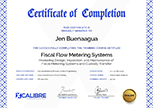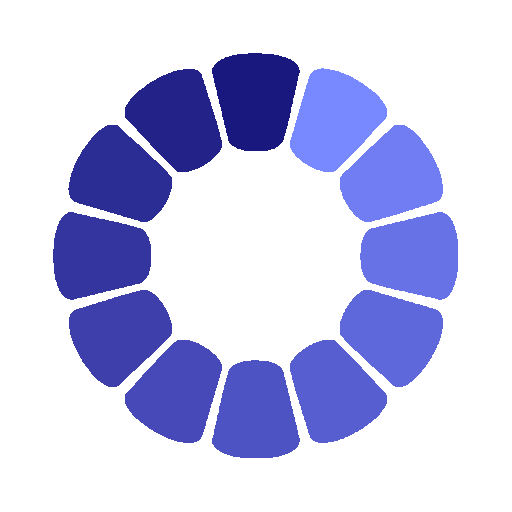| Date | Venue | Fee | |
|---|---|---|---|
| 06 Oct - 10 Oct 2025 | Dubai – UAE | $ 4,950 | Register Now |
| 15 Jun - 19 Jun 2026 | Dubai – UAE | $ 5,950 | Register Now |
| 05 Oct - 09 Oct 2026 | Dubai – UAE | $ 5,950 | Register Now |
About the Course
This 5-day comprehensive Open and Cased Hole Log Interpretation training course will highlight the techniques and principles of the main open and cased hole logging tools used in the oil industry for professionals who must deal with wireline logs in their daily jobs. In the open hole part, the delegates will use the open hole to perform a complete interpretation to get the porosity, water saturation, net to gross, lithology identification, and shale volume calculation. It will touch some advanced logs in the market, such as NMR, ECS, Acoustic, etc.
It will cover a wide range of knowledge in production logging topics, focusing on PLT measurement tools and interpretation. It instills the delegates on the use and limitations of various production logging tools, including spinner, temperature, noise, fluid injections, and other tools. They will learn what results these tools yield, the interpretation assumptions that are integral to their designs, and how quality is affected by the acquisition process. In addition, the Noise tools and Temperature.
Delegates will deal with well integrity, covering Cement Evaluation, Corrosion Monitoring, and Leak Detections in Casings and tubings. In addition to water saturation monitoring behind the casing, the other part will cover tools such as pulsed neutron logging, sigma and carbon/oxygen (C/O) logging, and cased hole formation resistance. Also, it will cover the new technology tools such as Optical Sensors (gas hold-up), Electric Sensors (Water Hold-up), and the FSI tool (Casing Cross-sectional coverage).
Core Objectives
The delegates will achieve the following objectives:
- Learn the physical principles of main open and cased hole logging tools
- Understand the use of open hole to perform a complete interpretation to get the porosity, water saturation, and net to gross, in addition to lithology identification and shale volume calculation
- Know how to interpret advances tools such as NMR, ECS, and DSI
- Identify the main applications and limitations of the different tool readings
- Perform a Qualitative and quantitative formation evaluation on a simple lithology
- Comprehend the uses and interpretation of open and cased hole logging tools
- Determined the correct water saturation in the field and get the updated WOC
- Know how to use production logs to measure two-phase flow rates (water/oil, oil/gas, water/gas) and three-phase flow rates
- Acquire the cement evaluation by USI and CBL
- Appreciate the use of production logs to evaluate casing integrity and cement-casing bond
- Understand the time lapse logs to monitor reservoir development during production
- Know how to use production logs to identify and quantify Interzone Crossflow
- Know how to use the Gowell Tools for well integrity such as (ePTD, MTD, MFC, and NOISE)
Training Approach
This training course will be conducted through classroom or virtual training in interactive and practical methods. There will be daily individual exercises, and everyone will get an opportunity to discuss their issues with the software or with the concept itself. There will be a PowerPoint Presentation to capture all notes and explain everything in detail, and a daily recap will be provided for maximum benefit for the delegates.
The Attendees
This training course is designed for professionals who have a basic understanding of open hole and production logging and cased hole logging and are interested in learning more advanced techniques and applications. It is also open to anyone interested in learning more about advanced production logging, cased hole logging, and open holes, such as young professionals and researchers.
Likewise, it will be valuable to the professionals but not limited to the following:
- Reservoir Engineers
- Petroleum Engineers
- Development Geologist
- Field Engineers
- Production Managers
- Field Managers
- Oil Field Technical Staff
- Production Technologists
- All Individuals involved in the area of Production Logging
Daily Discussion
DAY ONE: BASIC CONCEPTS REVIEW, RESISTIVITY, AND POROSITY TOOLS
- Basics of Logging and LWD
- Reservoir Rock Properties
- Reservoir Fluids Properties
- Outline of the Logging Tools Principles
- Density, Neutron Logs Acoustic Logging
- Resistivity Logging: Shallow and Deep reading Resistivity Logs
DAY TWO: QUICK LOG ANALYSIS AND SATURATION MODELS
- What are PVT properties?
- Open Hole Log Interpretations Methodologies
- Shale Evaluation and Clay Types and Clay Structure
- Shale Effects on Evaluation of SW
- Quick Look Interpretations Interpretations in Shaly Formations
- Different Saturation Models
- Cross Plots for Lithology Identifications
- RW Calculation and Picket Plot
- Carbonate Reservoir Challenges
DAY THREE: NUCLEAR, ACOUSTIC, AND GEOCHEMICAL LOGGING TOOLS
- Acoustics Tools and Applications
- Advances in NMR Log Application in Open Hole and LWD
- ECS and its Applications
- Core Integration with Logs
- Unconventional Reservoir Analysis
- Demo on TechLog to Perform the Analysis
DAY FOUR: WELL INTEGRITY AND CEMENT EVALUATION
- Well Integrity and Corrosion by Different Tools such as GOWELL Tools (ePTD, MTD-MFC)
- The Cementing Process CBL – VDL: CBL for average Casing to Cement Bond & VDL for Cement to Formation Bond
- Ultrasonic – Fine Azimuthal Measurements for Differentiation Between Micro Annulus & Channeling
- Cement Evaluation Workshop
- Casing Corrosion Principle- Corrosion Mechanisms
DAY FIVE: SATURATION MONITORING AND PRODUCTION LOGS
- Basics of Nuclear Physics Used in Reservoir Monitoring
- Inelastic Capture: C/O Ratios Used to Calculate SW and Sigma Mode
- Pulsed Neutron Capture: Neutron Capture Mode Used to Obtain Water Saturation
- Production Logging Tools
- Interpretations Estimating Fluid Hold-ups: Water Hold-up, Oil hold-up and Gas-hold-up
- Nose Logs for Leak Detection and Infectivity Profiles
- Production Logging Tool Types Optical Sensors Electric Sensors Flowmeters FloScan Imager
- Temperature Logs Applications
Certificate Awarded
Upon successful completion of this training course, participants will be awarded a Certificate of Completion from XCalibre Training Centre, acknowledging their accomplishment. This certificate serves as a testament to their dedication to developing their skills and advancing their expertise in their respective fields.


